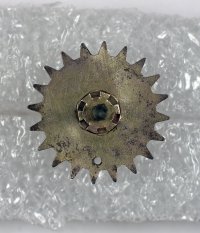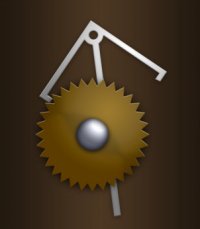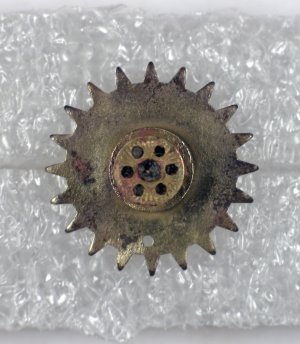Clock Escapement

Conservator’s Notes
The surface of this 19th- or 20th- century object had a large mass of deposits and orange corrosion products, which is evidence of corroded iron. When touched to a magnet, parts of this object had a strong pull indicating the presence of ferrous iron. But unlike iron, an X-ray showed high levels of core metal remained and that the object had a clear outline indicating no corrosion had been present, which is common with copper alloys. The object’s “teeth” were in very stable condition and showed no signs of active corrosion and had no magnetic pull, indicating they were copper alloy. Therefore, based on our examination, this object is a “composite” artifact consisting of both copper alloy and iron components. The X-ray, however, could not confirm nor disprove the object’s true identity. Due to the objects shape, it was temporarily categorized in the condition report as a spur rowel.
Since the cleaning technique for one of the materials could potentially damage the other material, careful consideration had to be made. For example, distilled water could not be used to clean the sections of iron and the copper could not be air abraded. Instead, air abrasion techniques with aluminum oxide powder were used to decrease both soil and corrosion products to the iron sections only. The iron was then treated with tannic acid, which is only a corrosion inhibitor for ferrous metal. Except for the use of distilled water, traditional copper cleaning techniques were used on the copper alloy sections, which included the removal of corrosion products with a fiberglass brush. Once all corrosion products were removed, the entire object was coated with Acryloid B-72.
Curator’s Notes
This object is part of an escapement from a 19th- or 20th- century clock. Escapements regulate a clock and actually make the sound of the clock ticking. This escapement, however, was designed to regulate the the ringing of a bell in an alarm clock. Correspondence with the American Clock & Watch Museum in Bristol, Conneticut identified its special function. To see a YouTube video of the inner workings of an alarm clock, go to http://www.youtube.com/watch?v=8QelRJ7ZLNs



